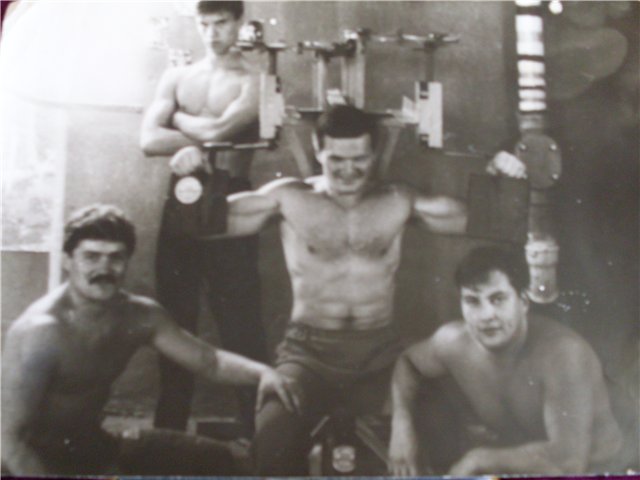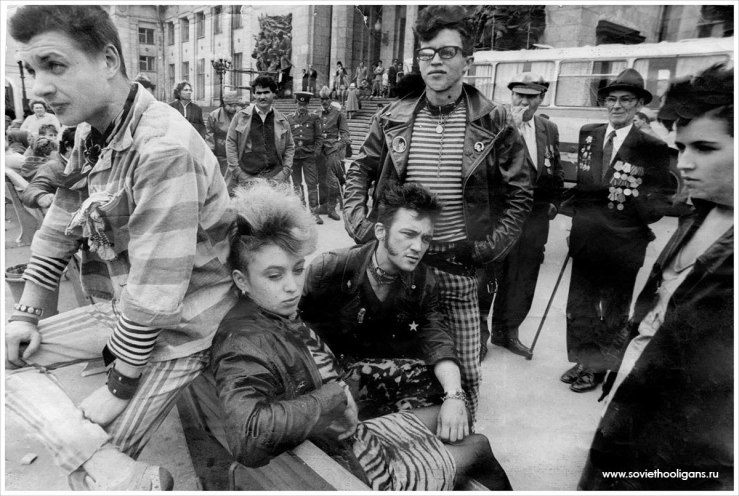During the decline of the Soviet Union, in the late 1980s and early 1990s, the theme of dissident and rebellious youth continued. As you can read about in my last blog post, the “stilyagi” emerged in the 1950s as a counter-culture, Western-style movement of rebellious youths. The older generations despised this new movement; they were not explicitly going against party or Socialist ideals, but their emulation of Western culture showed the government did not have total control over the lives of their people. This idea continued through the end of the Soviet Union, with a unique case study in the Lyubers.

Lyubers were a group of young, white bodybuilders form the oblast of Moscow called Lyuburtsy. They were known to despise anyone who emulated Western culture, or showed any non-Russian individuality at all. They would “beat up punks, hippies, and metallists, and break dancers too,” in order to “defend Moscow.” Their idea was that Moscow was the capital, and they needed to “clean out” the people from this area who were going against the party—even if it was just in the form of dress or cultural preferences.

This idea of restless youth shows how the government and party was not effective in controlling the lives and ideals of their people. They tried to created other “acceptable outlets” for youths to “channel their energy,” such as sports clubs and discotheques. However, the rebellious youth continued on. The idea that total control was not possible was mirrored in an interview with the police, in which they denied that the Lyubers were even a problem. They didn’t want to admit that the Lyubers were causing issues, because they knew they couldn’t stop them and didn’t want to show that they didn’t have total control. The Lyubers show the urgency that Soviet society was feeling as the oppressive controls on society were not having the control over society that they had hoped.

This post earned a red star from the editorial team.
Sources
http://www.vintag.es/2016/05/soviet-culture-of-1980s-goths-punks-and.html
https://dlib.eastview.com/browse/doc/19994487
https://dlib.eastview.com/browse/doc/19994643
http://www.nytimes.com/1987/03/07/world/moscow-s-east-side-story-teen-age-toughs.html?pagewanted=all
http://soviethistory.msu.edu/1985-2/the-guys-from-liubertsy/

This is a super interesting topic! I found it ironic that the police did not want to admit the Lyubers were causing problems because they were trying to stop the hippies that were apparently the “real” problem. I took a class on the 1960s in America and it made me question if there was a similar group in America equivalent to the Lyubers . We didn’t discuss any in my class but I assume their must of have been. You mentioned that they weren’t effective in society, was their a specific event that took them down/what ended up ending this group(if it isn’t around anymore?)?
LikeLiked by 1 person
As Madlyn said, this is a very cool topic. I read another post that talked about dissident youth as well and how older more conservative Russians did not like them or approve of their rebellious behavior. It is interesting to read about other youth groups fighting the youth that emulated Western ideals. It goes to show that Communist Party pride was found in more than just the older generations.
LikeLike
Hey Caroline, I’ve really enjoyed how your last couple of blog posts have focused on social unrest within Soviet society and how certain groups were being pitted against one another to promote the ideas they thought provided the best chance of a successful future for a unified Soviet Union. What is interesting to me about the group in this blog post is that these men were young–for the most part, younger people tend to me more liberal and then people become progressively more conservative as they grow older, so the fact that they want a more idyllic Soviet Union is not what I expected. I may be projecting an American trend to a non-applicable country here though.
LikeLike
I also wrote about youth during this era in Soviet history. This is really funny that they had this group of people. I wrote about the “rockers” who were essentially a motorcycle gang. I am sure this group of bodybuilders had a role in trying to stop them! I agree that the government did not really have much control over its people. In my blog post I wrote about how they passed a law trying to stop Motorcycles from traveling in gangs but were ineffective in implementing the law. Great post, it is interesting to see another aspect of the tumultuous youth.
LikeLike
It is interesting how the Lyubers of the 1980s were the polar opposite of the stilyagi of the 1950s. In a time when the Soviet state was struggling to keep social order, it makes sense that it would encourage the anti-West agenda of the Lyubers.
LikeLiked by 1 person
Thanks so much for writing about the Liubertsy, Caroline! You found some terrific sources, especially in the Current Digest, that really highlight the contradictions between the authorities’ concerns and the agendas of “restless youth.” It’s also really great to see you linking back to your earlier work on the stilyagi.
LikeLike